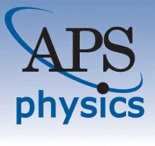
PHYSICAL REVIEW E
Scope & Guideline
Connecting Researchers with Cutting-Edge Knowledge
Introduction
Aims and Scopes
- Statistical Mechanics and Thermodynamics:
The journal prominently features research on statistical mechanics and thermodynamic principles, exploring equilibrium and non-equilibrium systems, phase transitions, and critical phenomena. - Complex Systems and Nonlinear Dynamics:
It includes studies on complex systems, nonlinear dynamics, and chaos theory, addressing how these systems behave and evolve, often through innovative modeling and simulation techniques. - Fluid Dynamics and Soft Matter:
Research related to fluid dynamics, particularly in soft matter and colloidal systems, is a core area, focusing on phenomena such as phase separation, droplet dynamics, and active matter. - Quantum Mechanics and Information Theory:
The journal also delves into quantum mechanics, particularly in the context of thermodynamic processes, quantum information, and the behavior of quantum systems under various conditions. - Biological and Ecological Systems:
Studies linking physical principles to biological and ecological dynamics, including models of population dynamics and the mechanics of biological materials, are also featured. - Interface and Surface Phenomena:
The exploration of interface dynamics and surface phenomena, especially in complex fluids and materials, is a significant focus, highlighting the interplay between structure and function.
Trending and Emerging
- Active Matter and Biological Systems:
There is a notable increase in research on active matter systems, particularly those mimicking biological processes, reflecting growing interest in understanding collective behavior and dynamics in living organisms. - Machine Learning and Data-Driven Approaches:
The integration of machine learning techniques for modeling, analysis, and prediction in physical systems is on the rise, indicating a shift towards data-driven methodologies in theoretical and experimental physics. - Quantum Thermodynamics and Information:
Emerging themes in quantum thermodynamics and the role of information in quantum systems are gaining traction, as researchers explore the implications of quantum mechanics on thermodynamic processes. - Non-Equilibrium Phase Transitions:
Research focusing on non-equilibrium phase transitions is increasingly prominent, driven by the need to understand complex systems in real-world applications, such as materials science and biological systems. - Complex Networks and Graph Theory:
The application of graph theory and complex networks to study physical systems is trending, allowing for better insights into connectivity and dynamics in both social and biological contexts.
Declining or Waning
- Classical Statistical Mechanics:
While still relevant, classical statistical mechanics topics have seen a reduction in the number of publications, possibly due to the growing emphasis on non-equilibrium and complex systems. - Traditional Plasma Physics:
Research specifically focused on traditional plasma physics appears to be waning as the journal shifts towards more interdisciplinary approaches that incorporate advanced materials and complex interactions. - Deterministic Chaos:
The exploration of deterministic chaos has decreased, likely due to the increasing complexity of systems being studied, which often require more nuanced, stochastic approaches. - Simple Model Systems:
Papers focusing on simple or idealized models have declined as the community increasingly favors studies that capture realistic complexities and interactions in physical systems.
Similar Journals
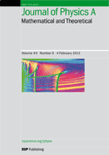
Journal of Physics A-Mathematical and Theoretical
Elevating Scholarly Dialogue in Mathematical and Theoretical PhysicsThe Journal of Physics A-Mathematical and Theoretical, published by IOP Publishing Ltd, is a premier peer-reviewed journal dedicated to advancing the understanding of mathematical physics, modeling, and simulation methods within the dynamic field of physics and astronomy. Established in the United Kingdom, this journal has made significant contributions over the years, maintaining a strong reputation as a Q1 and Q2 ranked journal across various categories, reflecting its influence in the scientific community. With a focus on innovative and theoretical approaches, it provides a platform for researchers, professionals, and students to disseminate their findings and engage with groundbreaking methodologies. Despite its lack of open access options, the journal's high impact factor and Scopus rankings, which place it in the top percentiles across multiple disciplines, underscore its critical role in fostering scholarly communication and collaboration in mathematical and theoretical physics. As we move through its converged years from 2007 to 2024, the Journal of Physics A continues to be a pivotal contributor to the landscape of contemporary physics, stimulating discussions and advancing knowledge in an ever-evolving realm.

Physical Review Research
Illuminating the path of scientific exploration.Physical Review Research, published by the American Physical Society, is a premier open access journal dedicated to the dissemination of high-quality research across all areas of physics and astronomy. Since its inception in 2019, this journal has quickly established itself as a vital platform for researchers, achieving a prestigious Q1 ranking in the dynamics of Physics and Astronomy (miscellaneous) and holding a commendable position in the Scopus Rankings with a rank of #29 out of 243, placing it in the 88th percentile. With the commitment to fostering scientific collaboration and transparency, Physical Review Research offers unrestricted access to valuable findings, enabling researchers, professionals, and students alike to engage with cutting-edge contributions in general physics and astronomy. As it converges into its forthcoming years of publication, the journal remains dedicated to showcasing rigorous research and innovative ideas that drive the field forward.

JOURNAL OF STATISTICAL PHYSICS
Connecting researchers to the pulse of Statistical Physics.The Journal of Statistical Physics, published by Springer, is a premier academic journal that has made significant contributions to the fields of Mathematical Physics and Statistical and Nonlinear Physics since its inception in 1969. With a strong reputation reflected in its 2023 rankings—placing it in Q2 of both categories and achieving an impressive Scopus rank of #22 in Mathematical Physics and #25 in Statistical and Nonlinear Physics—this journal serves as a vital platform for researchers, professionals, and students. The impact factor of the journal underscores its importance in disseminating cutting-edge research and theoretical developments. Authors are invited to submit original research articles that explore the intricate complexities of statistical mechanics, quantum physics, and related disciplines, fostering deep insights and academic discourse. Although the journal does not currently offer open access, its robust editorial standards and commitment to advancing knowledge make it an essential resource for those engaged in these dynamic fields.
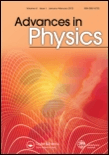
ADVANCES IN PHYSICS
Advancing Understanding Through Rigorous Scientific Inquiry.ADVANCES IN PHYSICS, published by TAYLOR & FRANCIS LTD, is a prestigious journal that has been at the forefront of condensed matter physics since its inception in 1952. With an impressive impact factor, the journal holds a prominent place in the academic community, classified as Q1 in the 2023 category for Condensed Matter Physics, and it ranks first among 434 journals in this field, demonstrating its value and influence. This journal provides a platform for cutting-edge research, encompassing theoretical, computational, and experimental studies that push the boundaries of knowledge in physics. Its commitment to high-quality publications makes it essential reading for researchers, professionals, and students alike. Although it does not offer open access, ADVANCES IN PHYSICS remains a critical resource for those aiming to stay updated with significant developments in condensed matter physics, fostering innovation and collaboration across disciplines.
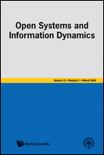
OPEN SYSTEMS & INFORMATION DYNAMICS
Unleashing Knowledge for Collaborative Scientific Discovery.OPEN SYSTEMS & INFORMATION DYNAMICS, published by World Scientific Publishing Co Pte Ltd, is a leading international journal dedicated to advancing research in the interdisciplinary areas of computational mechanics, information systems, and mathematical physics. With its ISSN 1230-1612 and E-ISSN 1793-7191, the journal has established itself as an influential platform for disseminating original research findings, reviews, and methodologies that address complex systems and dynamics. Its current impact factor reflects a solid reputation within the academic community, particularly amongst researchers in the fields of physics, statistics, and computational sciences. The journal's scope encompasses a diverse array of subjects, earning a Q2 classification in Computational Mechanics and Q3 in multiple other categories, including Fluid Flow and Transfer Processes and Information Systems. By providing open access to a wealth of knowledge, OPEN SYSTEMS & INFORMATION DYNAMICS is committed to fostering collaboration and innovation for students, researchers, and industry professionals alike, positioning itself as a cornerstone of scientific exploration and discovery in Singapore and beyond.
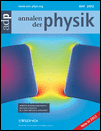
ANNALEN DER PHYSIK
Charting New Territories in Physics and AstronomyANNALEN DER PHYSIK, a prestigious journal published by WILEY-V C H VERLAG GMBH, stands as a cornerstone of the field of physics and astronomy since its inception in 1799. With an ISSN of 0003-3804 and an E-ISSN of 1521-3889, this journal provides a platform for innovative research and critical discourse across various domains of physics. Annalen der Physik is currently ranked in the Q2 category for general physics and astronomy, occupying rank #76 out of 243 in Scopus, placing it within the 68th percentile. This indicates its significant impact and the quality of research it publishes. Although the journal does not offer Open Access options, its robust historical lineage and ongoing contributions ensure that it continues to be an essential resource for researchers, professionals, and students alike. For those seeking to stay at the forefront of contemporary physics research, ANNALEN DER PHYSIK represents a vital source of knowledge, innovation, and scholarly communication.

Nonlinear Phenomena in Complex Systems
Connecting Researchers in Nonlinear DynamicsNonlinear Phenomena in Complex Systems, published by BELARUSSIAN STATE UNIV, JOINT INST POWER & NUCLEAR RESEARCH, is an emerging platform dedicated to advancing the understanding of nonlinear phenomena within complex systems. With an ISSN of 1561-4085 and an E-ISSN of 1817-2458, this journal serves as a vital resource for researchers spanning the fields of mathematical physics and statistical and nonlinear physics. While classified within the Q4 quartile for both disciplines as of 2023, we encourage authors to submit impactful research that addresses the intricacies and challenges presented by complex systems, which are pivotal in various scientific applications. Targeting an international audience, including researchers, professionals, and students, the journal aspires to foster collaboration and innovation by offering open access to its insightful articles. With a converged publication timeline from 2009 to 2024, Nonlinear Phenomena in Complex Systems is poised to become a significant contributor to the evolving dialogue around nonlinear dynamics and their implications across multiple scientific domains.

JOURNAL OF EXPERIMENTAL AND THEORETICAL PHYSICS
Catalyzing Discoveries in the Realm of PhysicsJournal of Experimental and Theoretical Physics is a distinguished publication in the field of physics, dedicated to disseminating pioneering research and fostering intellectual discourse in both experimental and theoretical domains. Published by Pleiades Publishing Inc, this journal has established itself as a crucial platform for physicists, with a commendable Q3 categorization in the 2023 rankings within Physics and Astronomy, illustrating its impactful contributions to the discipline. The journal features a wide array of articles that delve into the intricacies of physical theory, experimental techniques, and applications, making it an invaluable resource for researchers, professionals, and students alike. Although it operates under a traditional access model, its longstanding history, dating back to 1980 and converging years through to 2023, underscores its commitment to advancing the frontiers of physics knowledge. The journal is also notable for its engagement in the scientific community, aiming to bridge the gap between theoretical predictions and experimental validations. As a part of Pleiades Publishing, it continues to uphold rigorous standards of academic excellence, inviting contributions that push the boundaries of current understanding and stimulate further exploration in the fascinating world of physics.
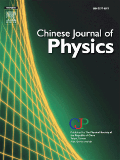
CHINESE JOURNAL OF PHYSICS
Elevating Knowledge in Physics and AstronomyCHINESE JOURNAL OF PHYSICS is a distinguished publication in the field of physics, published by Elsevier. With its roots in Taiwan, this journal has been a vital platform for disseminating innovative research findings since its convergence in 1996, and it continues to thrive, with articles contributing to the advancement of physics and astronomy until 2024. The journal is recognized for its high quality, achieving a notable Q2 ranking in the Physics and Astronomy category, positioning it among the top 30 out of 243 journals in its field, reflecting an impressive 87th percentile ranking. Although it does not operate under an open access model, the journal offers valuable insights into the latest trends and developments in general physics and astronomy, making it an essential resource for researchers, professionals, and students dedicated to advancing their knowledge and understanding of these dynamic fields. With a commitment to rigorous peer review and a diverse range of articles, the CHINESE JOURNAL OF PHYSICS is instrumental in fostering collaboration and innovation within the global scientific community.
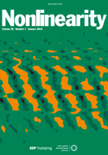
NONLINEARITY
Advancing Insights in Nonlinear ScienceNONLINEARITY is a premier academic journal published by IOP Publishing Ltd, dedicated to advancing the field of complex systems through the lens of nonlinear science. Since its inception in 1988, the journal has established itself as a vital resource for researchers and professionals alike, offering a robust platform for disseminating high-quality research in areas such as applied mathematics, mathematical physics, and statistical and nonlinear physics. With an impressive Q1 ranking across multiple pertinent categories, including Applied Mathematics and Mathematical Physics, NONLINEARITY ranks among the top journals globally, making it essential reading for those seeking to deepen their understanding of nonlinear phenomena. Although it does not operate under an open-access model, its rich repository of rigorous articles significantly contributes to academia, fostering innovative thought and facilitating cutting-edge research. Located in the heart of the United Kingdom at TEMPLE CIRCUS, TEMPLE WAY, BRISTOL BS1 6BE, NONLINEARITY continues to be at the forefront of the scientific community, championing new discoveries and interdisciplinary dialogue within its dynamic scope.